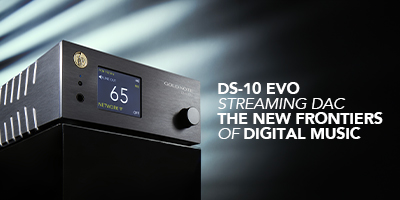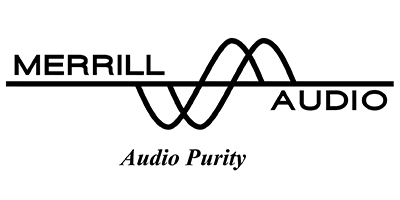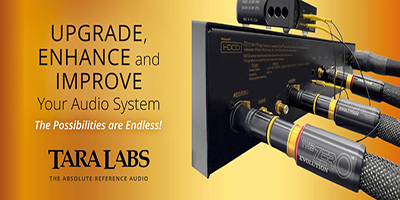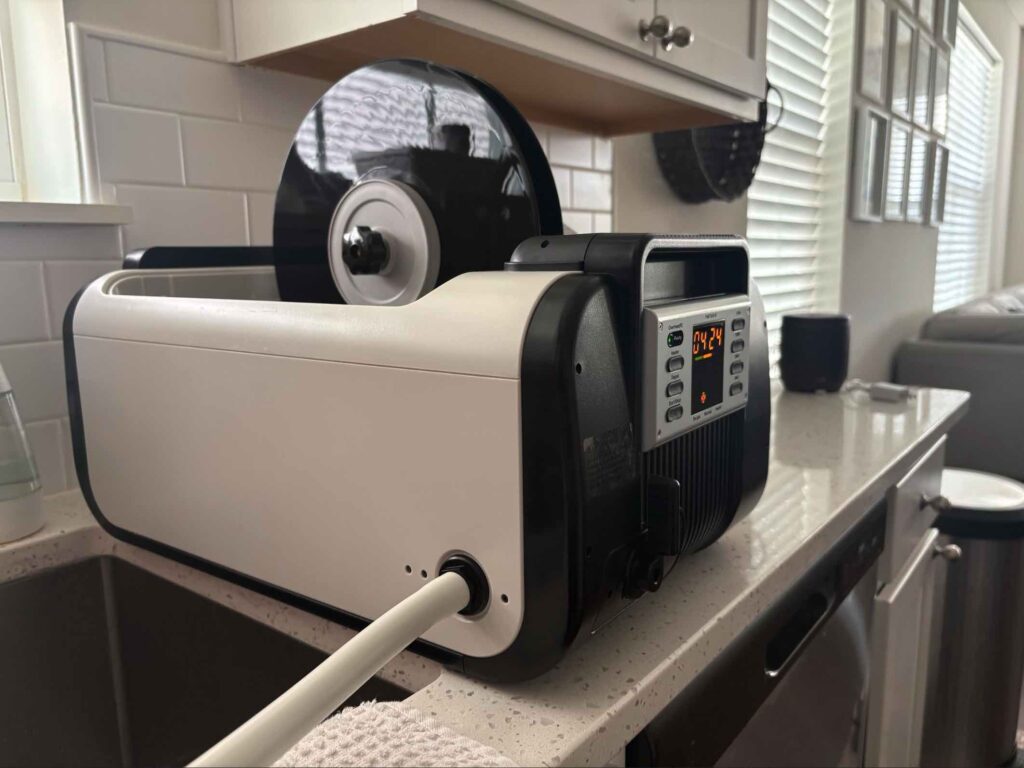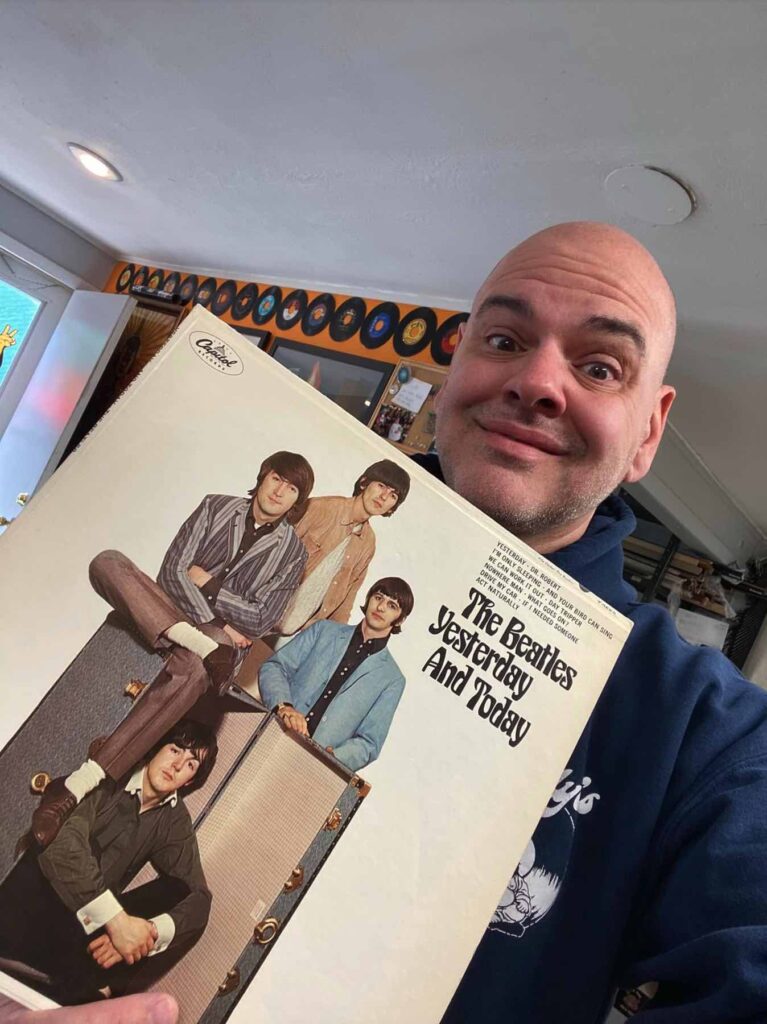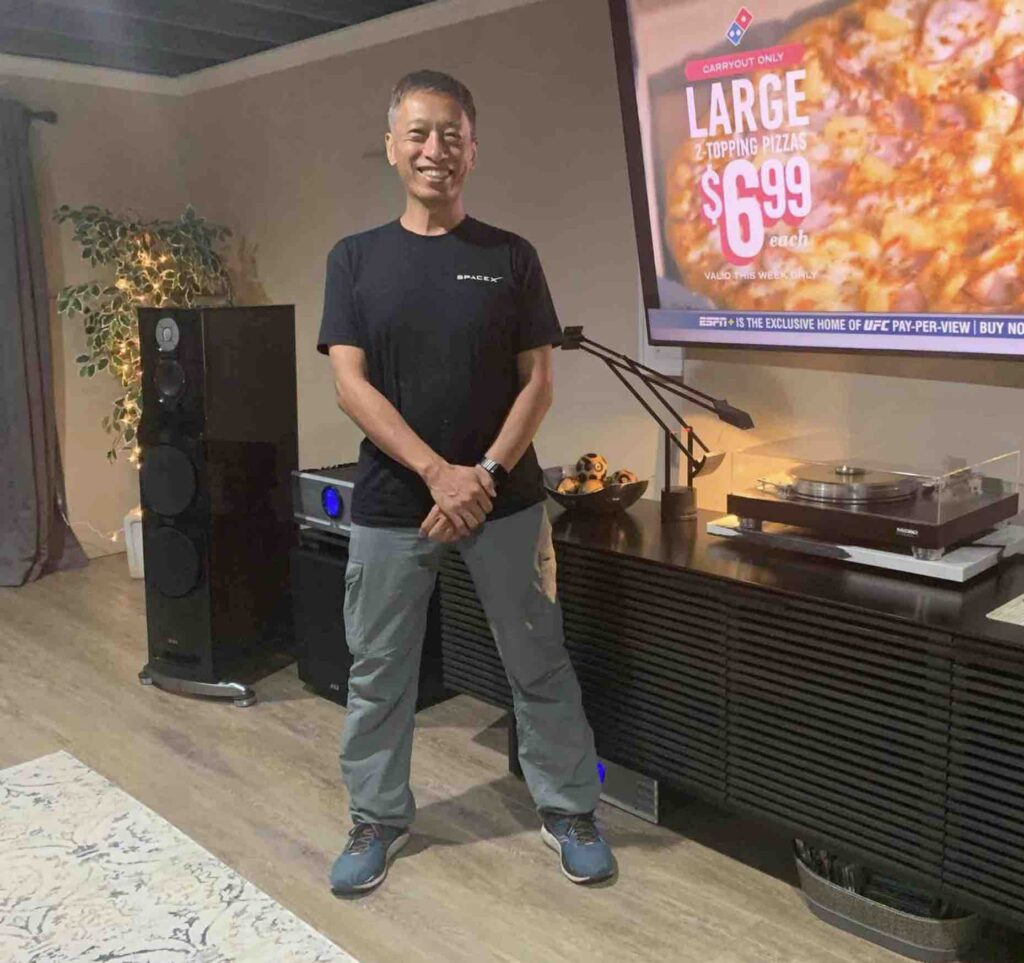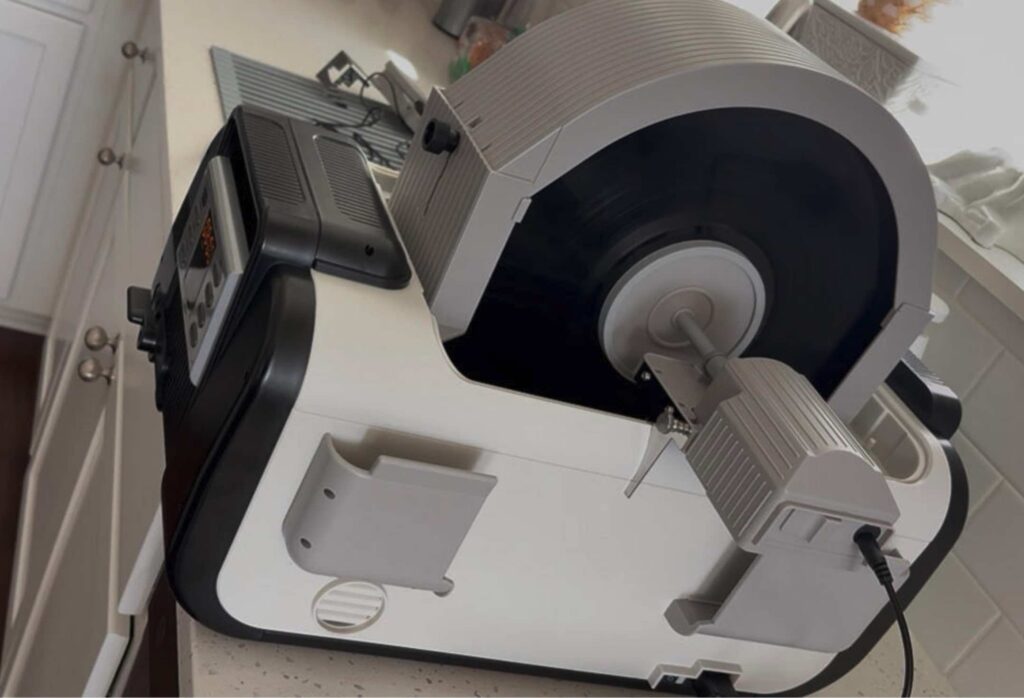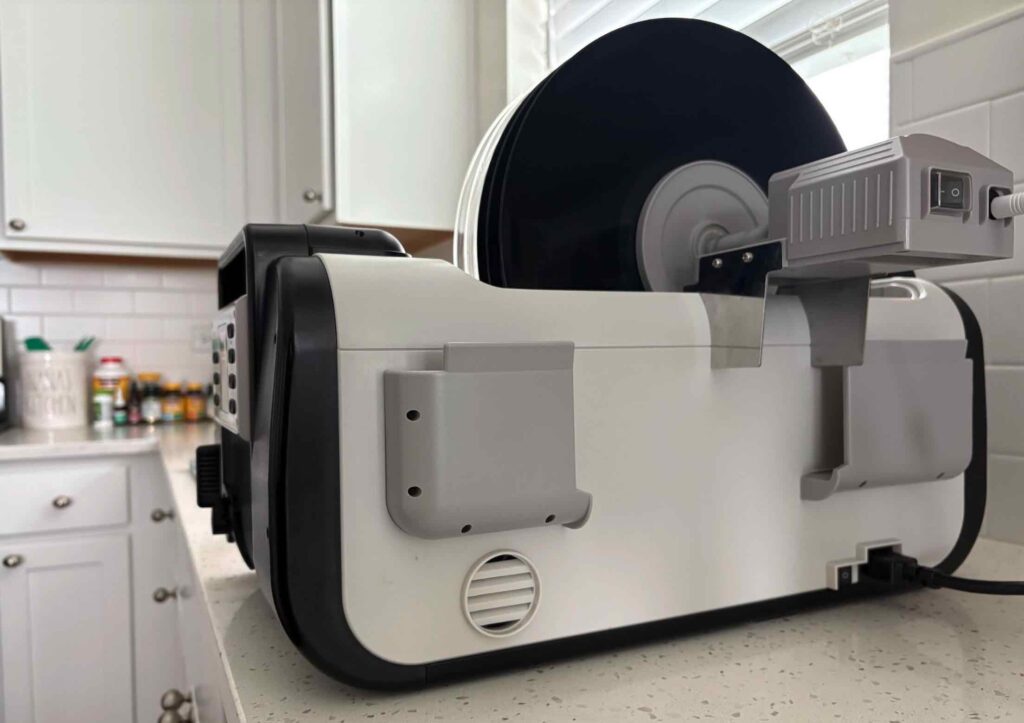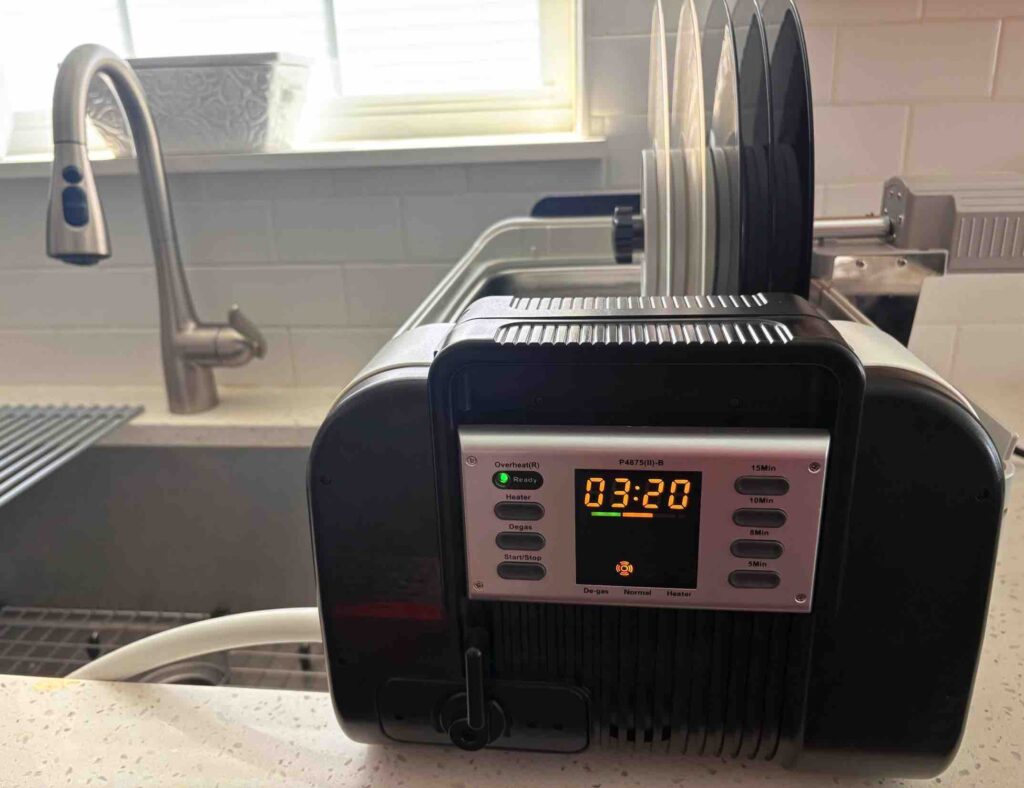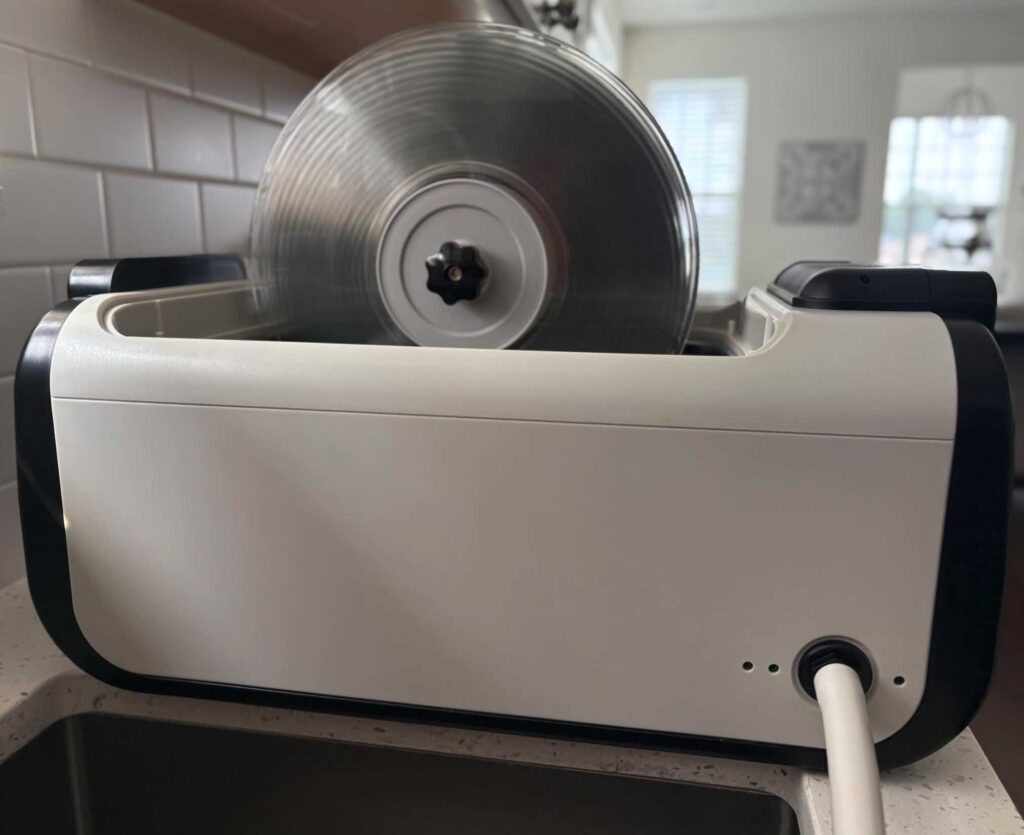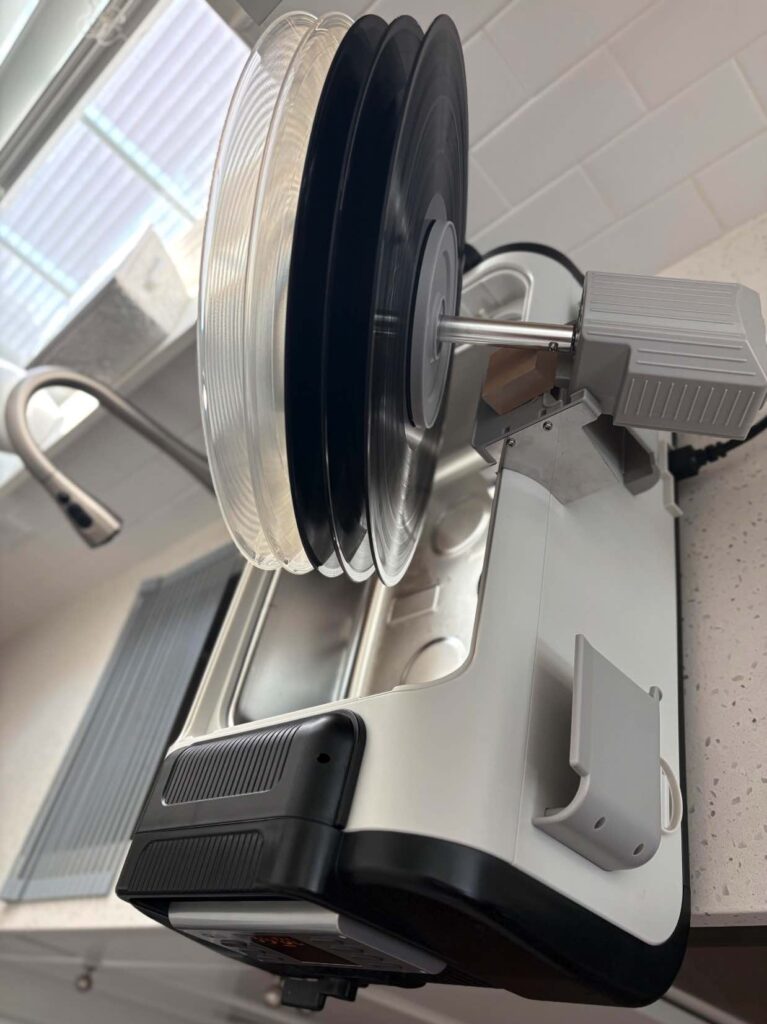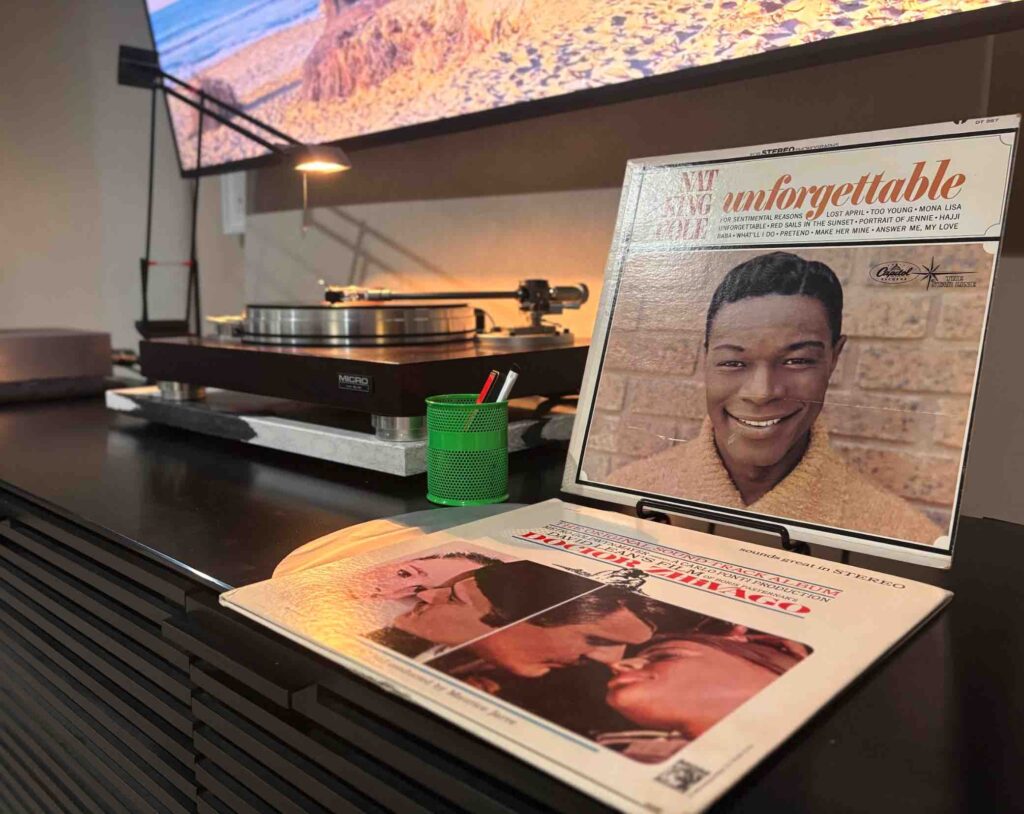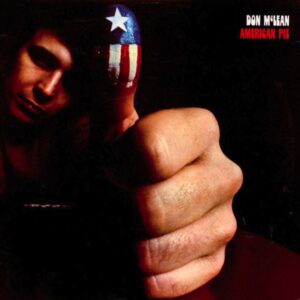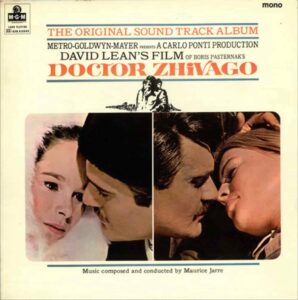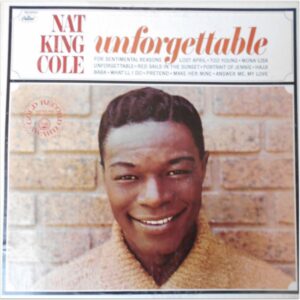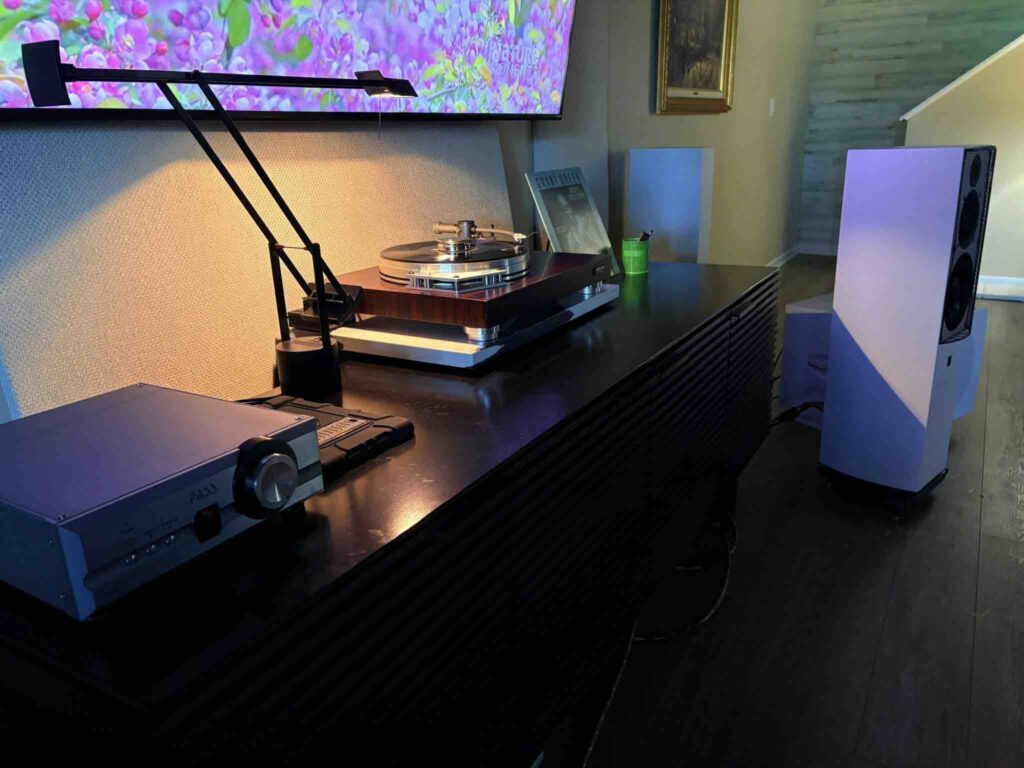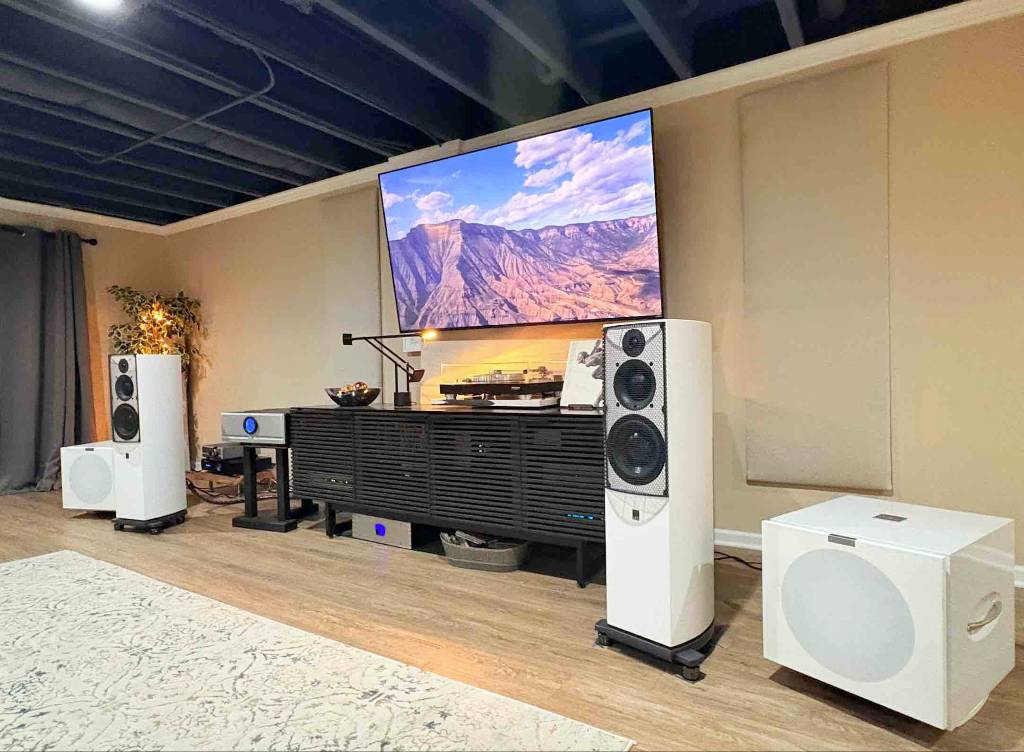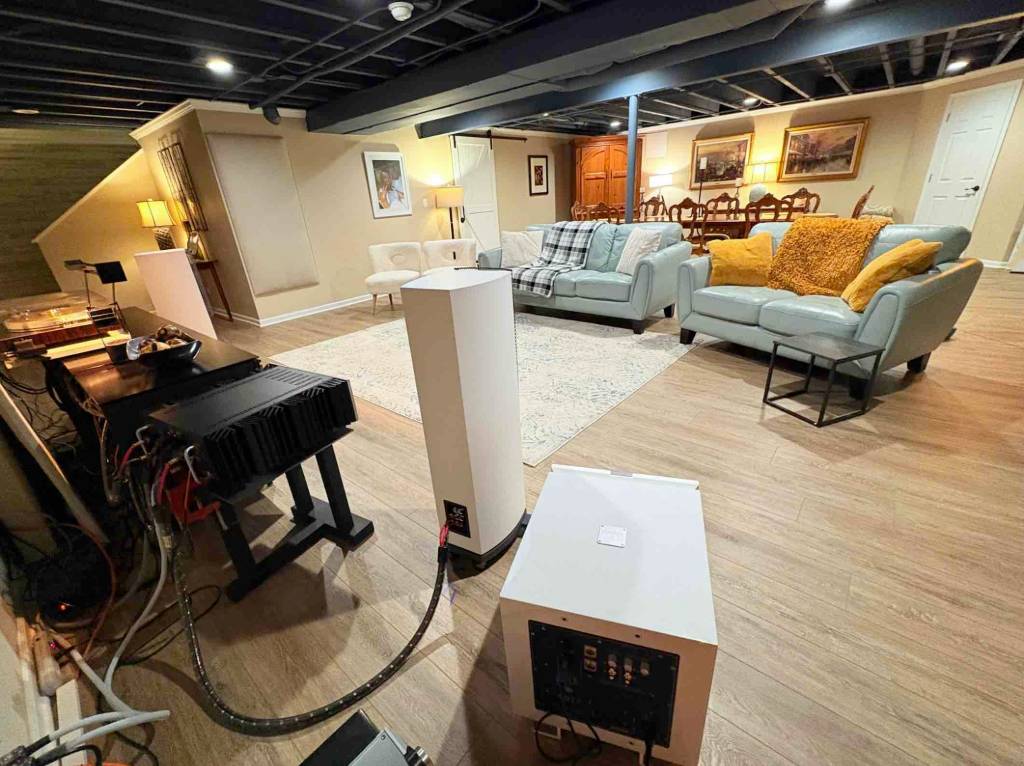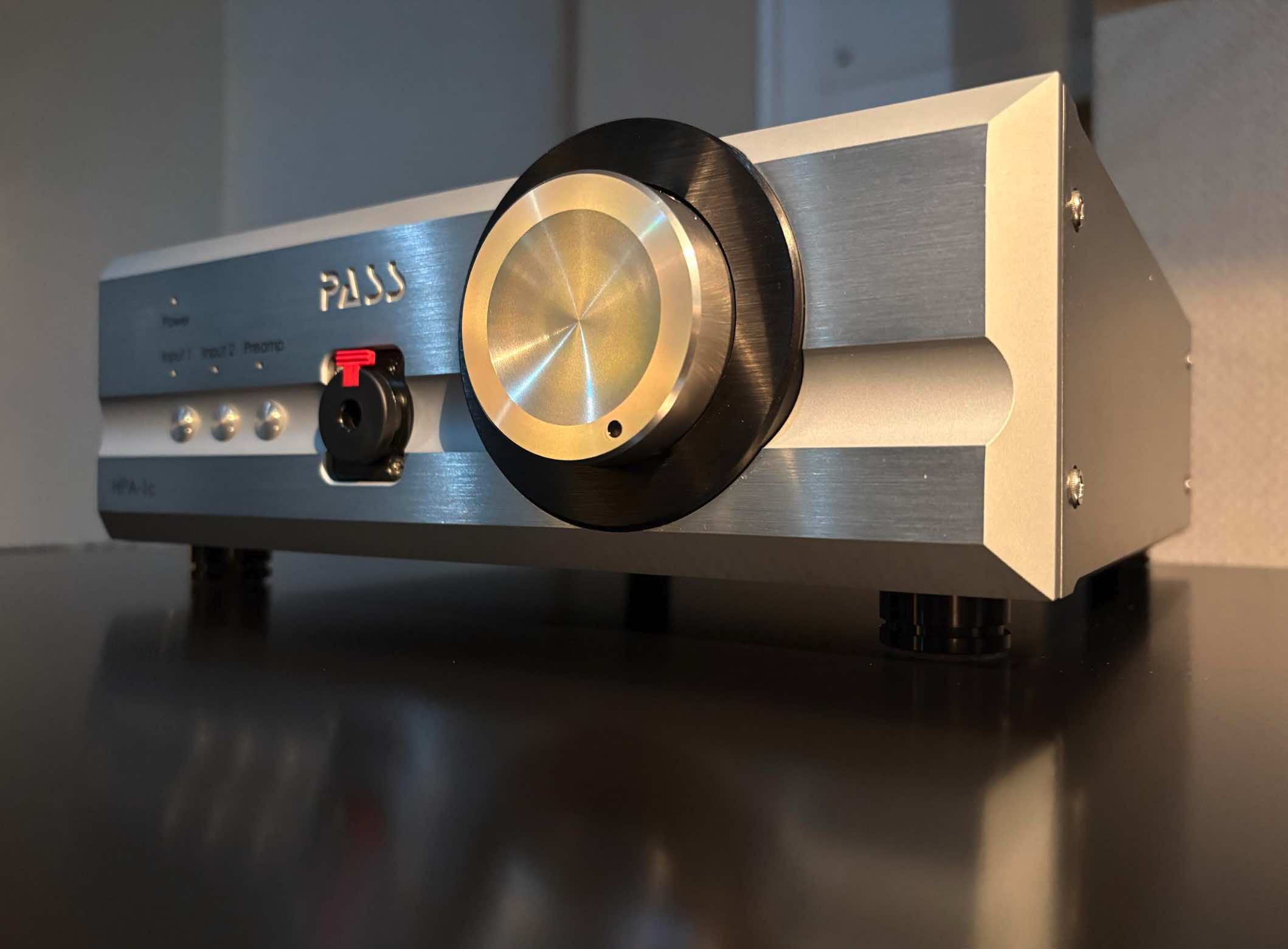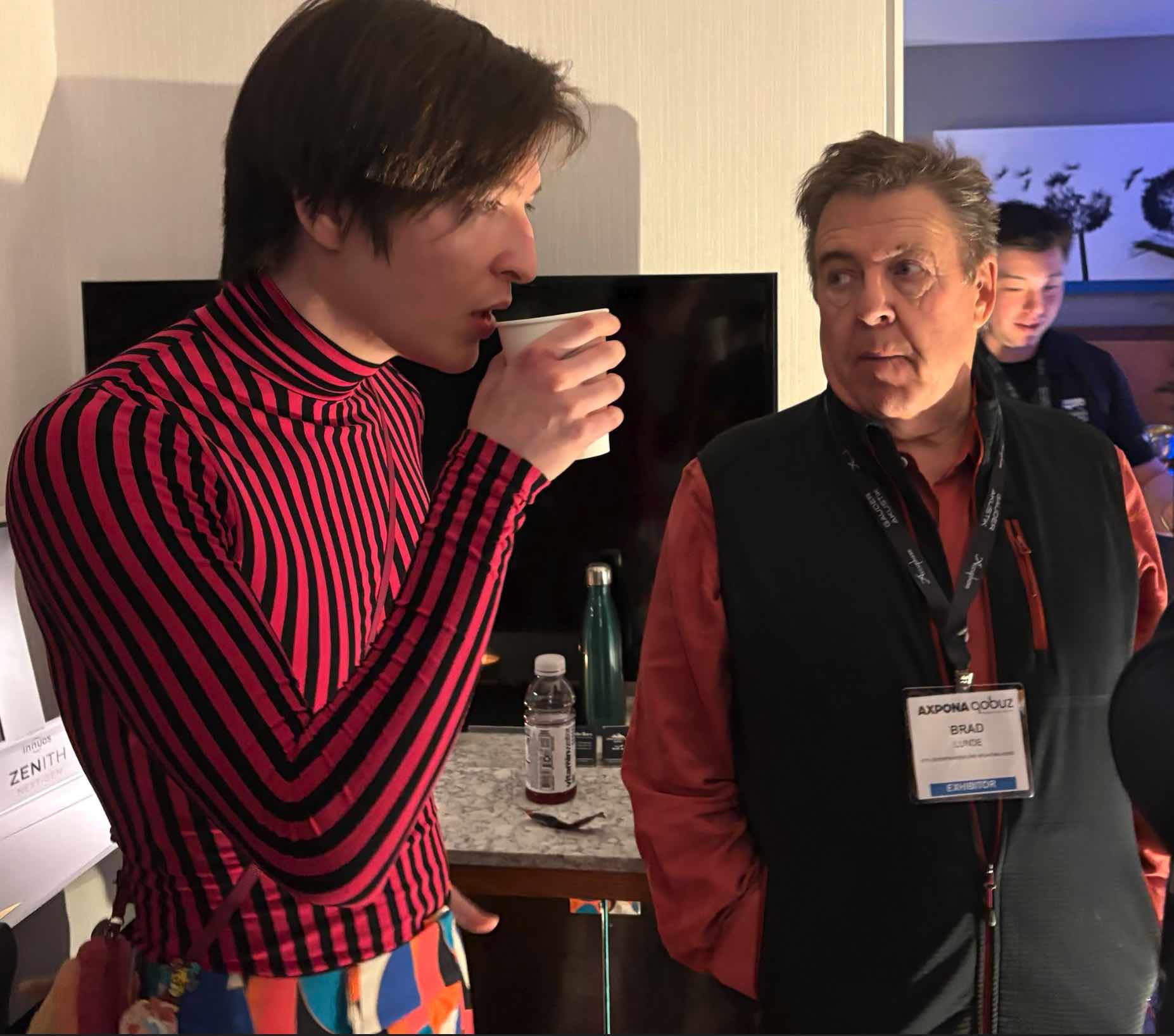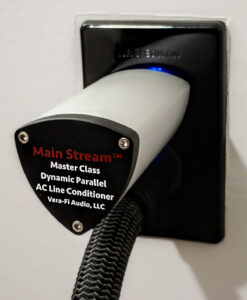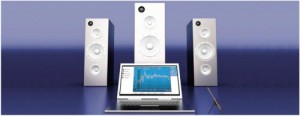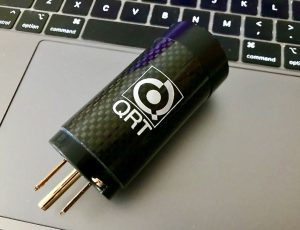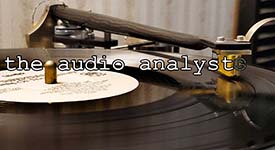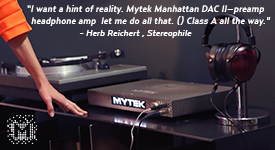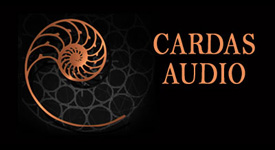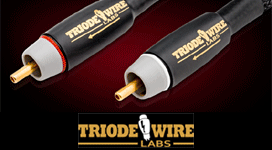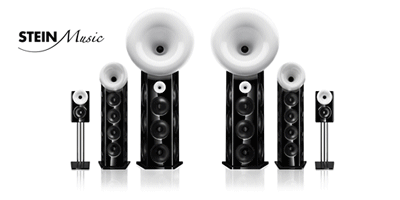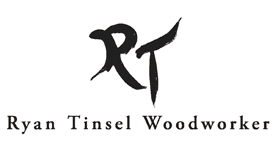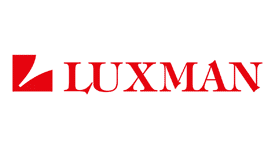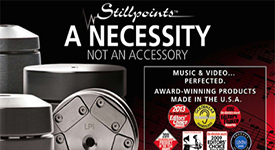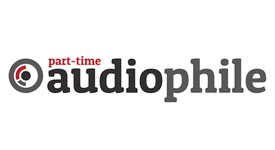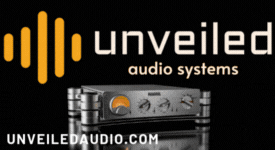It seems a lifetime ago. For my side hustle as a mobile DJ, I honed my beat-matching and mixing skills with a pair of Technics 1200 turntables at home to apply on the road with a Pioneer CMX-3000 Dual DJ CD player, but after I married Belle in 2011, I sold my gear, reinvested the proceeds into my home HiFi, and kept one of the decks for vinyl listening. Several years later, I observed men in white lab coats hawking expensive, gurgling, water-filled stainless steel vats cleaning LPs on spits at AXPONA (Audio Expo North America). I didn't get it at first. Why not save money and wipe them with a brush, cloth, or a corduroy-covered sponge with record cleaning solution instead?
That's me DJing a Halloween party circa 2010
Ten years later, after multiple upgrades, the Technics 1200 was long gone, replaced with a vintage Micro Seiki turntable. It employed a GrooveMaster 3 tonearm, a Korf Audio ceramic headshell, and the Goldring Ethos SE Moving Coil Cartridge. Now I was exploring more efficient ways to clean my vinyl records, which is when I took a closer look at ultrasonic cleaning.
In 2023, ultrasonic cleaning systems commanded a significant portion of the vinyl record cleaning market, with automated and ultrasonic cleaning methods claiming over 45% of the market share, according to a LinkedIn report. This growth is largely driven by consumer demand for convenient and effective record cleaning solutions that deliver superior sound quality, according to a LinkedIn article. (Google AI search, July 31, 2025)
The vinyl record cleaner market was valued at $150 Million in 2024, and is projected to hit the $300 million mark by 2033, with a compound annual growth rate of 8.5% from 2026 to 2033. (www.marketsizeandtrends.com)
“Ultrasonic energy is viewed by many as the safest and most effective way to remove dust, dirt, oils, and other contaminants from extremely fine record grooves that produce the high-fidelity sound demanded by audiophiles," wrote Dr. Rachel Kohn, a PhD Chemist who co-founded Tovatech, a distributor of laboratory instruments. “The microscopic vacuum bubbles produced in an ultrasonic record cleaner implode with great force to loosen and carry away these contaminants, but the process is so fast there is no damage to the vinyl records being cleaned”. (www.tovatech.com/blog)
Initially, I considered purchasing an inexpensive industrial ultrasonic cleaner on Amazon, but when I spied several in a tour of the SOTA Turntable factory last summer, I informed its owner, Christan Griego, of my intent. To my surprise, he cautioned that while they're great for cleaning metal parts, he wouldn't trust them with his vinyl.
I did a little more research and, after asking a record store owner what he used to clean his used LPs, he recommended ultrasonic cleaning by a company called iSonic, Inc. that's based in Chicago, Illinois. He was very pleased with their effectiveness in cleaning large batches of records and, intrigued, I asked for their information.
Several weeks later, iSonic's Ten Chu dropped off the iSonic P4875 II MVR5 Ultrasonic Record Cleaner, which cleans up to five records at a time, as well as their pro version MVR10, that cleans up to 10 records with spin drying, and their PSR01A iSonic Pump Station, which drains water out of the vat while using the power spin drying feature, and could pump it back in to clean additional records—saving time and water.
iSonic, Inc. founder, Jerry Fan (dated photo courtesy of LinkedIn.com)
A Little Backdrop on iSonic, Inc.
"I was born in China, and I went to an engineering college there," iSonic, Inc. founder, Jerry Fan, wrote by email. "Got my M.A.Sc. degree from the University of Toronto. I worked in China, Canada, and the USA before I started my own business, iSonic, Inc., in 2010. It specializes in ultrasonic cleaners."
No kidding. iSonic Inc.'s manufacturing plant annually produces approximately one million ultrasonic cleaners to a customer base of distributors, retailers, business establishments, laboratories, dental clinics, manufacturers, and consumers, according to their website, using "state of the art AI and SMT lines, under ISO 9001:2015 and ISO 13485:2016 quality system, with BSCI (Business Social Compliance Initiative) certification." (https://iSonicinc.com)
"About eight years ago, I met an audiophile at a trade show not related to audio at all," Fan says. "He said to me, 'You have so many ultrasonic cleaners. I bet you can make one to clean vinyl records.' I wasn't in the know and replied, 'Didn't vinyl records already die?'
"'No!' he said, 'Vinyl records are coming back.' The rest was history."
Record Stores, such as Daddyo's in Wauconda, Illinois, use iSonic Ultrasonic Record Cleaners to clean their vinyl inventory (photo courtesy of Daddyo's Framing Music Memorabilia Facebook page)
Nowadays, iSonic's primary record cleaning ultrasonic machine customers are "record collectors, HiFi stores, and record stores," he says. While it's hard to pinpoint the exact market share iSonic Inc. holds in the ultrasonic record cleaner market, they are a significant player, especially known for their affordable options, according to online forums. (Google AI search, July 31, 2025) Other brands like the Degritter ($3625) also compete in this arena, offering more premium, feature-rich machines. With the overall ultrasonic cleaning market projected to grow, iSonic's focus on accessible ultrasonic record cleaning has helped them gain a strong position. (Ibid)
Fan's venture into record cleaning ultrasonic machines isn't strictly business, it turns out. "I'm a novice record lover. I started to collect records after we made the ultrasonic vinyl record cleaners."
Then in 2024, he sold the business to venture Capitalists, Ro Kumar and Ten Chu of Rok 10 Ventures. With Ten Chu installed as its CEO, Fan now serves as a consultant.
iSonic, Inc.'s CEO, Ten Chu, seen here in my listening room in 2024
"We extend our heartfelt congratulations to Jerry Fan, who has built iSonic into an industry-recognizable brand over the past 15 years," Kumar wrote in a press release. "Jerry will continue providing advice, guidance, and support to the ongoing business while gaining sufficient free time to play one extra round of golf per week," adding, "As we look to the future, we are fortunate to have Ten Chu, who will be stepping into the role of the new CEO of iSonic. Ten's expertise in technology will accelerate the adoption of eCommerce, automation, analytics, and AI to position iSonic for its next growth phase." (LinkedIn.com)
On the direction of iSonic's Record Cleaning Product Line
"We have launched three generations of ultrasonic record cleaners in the past seven years," Fan says. "The latest development is that we have improved the pump station, which is used in conjunction with spin drying, by making the filter very easy to replace. We always try to provide better products. We specialize in ultrasonic cleaners, and we provide better ultrasonic vinyl record cleaners than the competitors. Most of them are not specialized in the ultrasonic cleaners at all, while they are difficult to be made well."
Not All Vinyl Sunshine and Rainbows: An Unfortunate Reviewer Experience
In 2023, one of iSonic's ultrasonic record machines received a negative review from a celebrity audiophile reviewer. "I was warned by an audiophile that [said reviewer's name withheld] and [a popular ultrasonic record cleaning maker] were very close when I told him that [the reviewer] had agreed to do a review for us," Fan recounts. "I thought that since he was a reviewer, he would be ethical and fair, so I ignored his warning. The review [he] did proved that I was totally naive and wrong."
"First, the review was about an ultrasonic vinyl record cleaner," he continued, "but [he] didn't do any reviews on the results of the ultrasonic cleaning using the machine. Instead, [he] spent the entire time trying to explain why the machine would not work. [He] is an audio equipment reviewer, but [he] doesn't know about ultrasonic cleaners at all. All [he] said and showed was taught by [the said ultrasonic record cleaning maker], who considered us as his worst competitor.
"One sign of erroneous explanation was that [he] said that our spin drying would splash water all over, so [he] had to move the unit to [his] garage, while the spin drying feature has a splash guard to keep water from being splashed out." (Note: The hood can be seen sitting off to the side and rear of the iSonic machine in the videotaped review.)
"Another clear erroneous demo [he] did was using a cavitation meter and announced that there was no cavitation, and then said, 'Now it had cavitation.' This happened while the unit was on the degas mode (ultrasound was on pulses), so of course, there was no cavitation when the ultrasound was not on. The cavitation meter is a very specialized and expensive instrument which is not commonly available. It's obvious that [the said ultrasonic maker] lent the cavitation meter to [him] and told [him] what to say. [He] threw his professional ethics out of the window and did this review for the benefit of [his ultrasonic manufacturing friend]. This review proved that [he] is not professional and ethical at all."
The iSonic P4875 with the PRO set, making it a P4875II+MVR10-PRO, seen here spin-drying 10 records at my kitchen sink
Crossing My Fingers and Giving It a Spin
On that note, I'm at the sink in Belle's kitchen, where I clean my records, and, forewarned by the maligned pundit's iSonic review, I have plenty of towels on hand for the powered spin dry cycle (he cautioned, “even though there's a hood on top, the water sprays around the room").
Carefully following directions, I assemble the splash guard hood and, after draining water from the unit into the sink, I mount it over the wet records inside. Taking a deep breath, I press the button to begin the high-speed spin-drying cycle. A gradual, high-pitched whirring sound envelops the room as the records accelerate, rotating quickly, pause, and resume. After it stops, the records are dry, and there isn't an errant drop to be found anywhere. Beginner's luck? Maybe, maybe not, but either way, I won't have to sleep on the couch tonight! Gloating, I imagine someone driving a rental convertible through a rainstorm, and asking for a refund after getting soaked when he never bothered using the retracting roof. (You can view an iSonic company video describing the spin dry process HERE.)
iSonic P4875II+MVR5 Ultrasonic Vinyl Record Cleaner Features:
- One to five records can be cleaned at once
- Ten-inch and 12-inch records can be mixed and matched
- Holds two gallons (7.5 liters) of water
- Powerful industrial-grade ultrasonic cleaner cleans vinyl records thoroughly and quickly
- Label protectors seal off label areas against water
- Motorized fixture rotates the vinyl records at 5 RPM
- Four direct timer settings (5, 8, 10, 15 minutes) for easy selections
- Three industrial-grade 60W ultrasonic stack transducers with individual driving PCBs (ultrasonic power is 30% higher than one driving PCB for multiple transducers) for unmatched cleaning power
- Heater preset at 95°F/35°C, designed for vinyl record cleaning
- Multi-stage thermometer
- Drain valve to remove water easily
- Accessories included: 8 oz. cleaning solution concentrate (#CSVR01), 1 no-lint microfiber cleaning and polishing cloth, 4 Spacers (for 1-4 records cleaning), 4 double-sided circular tape to glue 2 label protectors back to back
- Optional accessories: 5-record extension kit to turn it into a 10-LP cleaner; PRO set to retrofit it to become P4875II+MVR10-PRO, with spin drying and 1-micron in-water filter (for new customers, order P4875II+MVR10-PRO instead); and 45s kit with a separate motorized fixture set
The P4875 II's chassis is 20" W x 13" D x 9 1/2" H and sports a rugged, industrial appearance with thick carrying handles at both ends. One end features a bank of control buttons flanking a digital display. On the left, top to bottom, there's a ready indicator light; a heater on/off button, a Degas button; and a start/stop button. At the center, the digital amber-lit display showcases the time selected and time remaining. And on the right are a series of time selection buttons: 15 minutes, 10 minutes, eight minutes, and five minutes. Below to the left is a lever that governs the tank's water; turned vertical, it retains the water, and turned horizontally, it releases the water from the tank through a tube in the adjoining side. On the opposite side, it has an on/off power switch and an IEC power cord input. The rotating motor and spindle assembly clips on the top of one side, with the motor and spindle rotating vertically to accept records, spacers, and 4 1/2" record label protectors fitted with O-rings. An oversized screw-on nut secures the records on the spindle. Once loaded, you lower it to the horizontal position, push the assembly forward to lock it into place, and begin the degassing and record cleaning process.
You need not employ the heating feature, I was told, however, if I do, make sure to not leave it on after you've finished cleaning records, as this may put the heating element at risk (I rarely used it).
Degassing removes any bubbles that may remain in the cleaning solution before cleaning and is triggered by pressing the Degas button twice. There is a distinct and intermittent buzzing sound in tandem with a slight rippling of water, broken by short pauses, as it does its work for one and a half minutes.
What is degassing? "It's the process of removing dissolved gases, like air, from the cleaning solution... [which] can hinder the ultrasonic cleaning process by interfering with cavitation, which is the formation and implosion of tiny bubbles that dislodge dirt. Degassing ensures the cavitation bubbles are powerful enough to clean effectively," according to Tovatech.com.
After degassing is complete, you select the cleaning length time. After doing some online research, initially, I chose five minutes to err on the side of caution. I didn't want to risk damaging my vinyl treasures by subjecting them to cavitation abuse. However, after further research, I became increasingly comfortable with longer cleaning periods. Bob Grossman, a retired Principal Librarian for the Philadelphia Orchestra, a retired bassoonist, and a veteran audio reviewer, recommended the following cleaning times:
- For new records, ten minutes to clean and remove factory-related release agents, dirt, and other debris
- For old, used, and previously treated records, 15 minutes
- Filthy records with lots of surface residue, 20 minutes
After the cavitation run expires, you slide the motor and spindle back, unlocking it, tilt it up at a 45-degree angle, and insert a square, 1 1/2" Lucite block that's 3/4" thick underneath it to secure it in that position and let it dry for one to two minutes, removing the records, wiping them dry with a fine microfiber cleaning cloth provided, or disposable Kimtech Science Kimwipe tissues, and placing them in an upright desktop file organizer or other slotted rack to air dry them completely before returning them to their sleeves.
Most manufacturers, reviewers, and vinyl connoisseurs recommend using distilled water in the cleaning process to avoid subjecting records to minerals, chlorine, and other contaminants that may damage them. Consuming the better part of two gallons per cleaning cycle for a handful of records can quickly add up and become costly. And towards that end, iSonic offers their second generation iSonic PSR02A Pump Station ($198.98), which drains water out of the tank for power spin drying, and allows you to pump it back in to clean additional records. It has a 10-micron filter. One hundred percent of the water is filtered while being pumped back to the ultrasonic cleaner (iSonic recommends using filtered tap water which avoids some problems that distilled water would have).
At $798, the base P4875 II MVR5 model allows you to clean a maximum of five records at a time; however, with an extension kit ($70), you can change it to a longer spindle for 10 records, resting the end on a clip-on support at the opposite side. You can also get a PRO kit ($335) to use the powered spin-dry option, or you can go straight for the P4875II+MVR10-PRO ($1169) and clean away!
As I mentioned, Mr. Fan recommended using filtered water, as opposed to distilled, and since we have excellent water filtration in our master bath to keep Belle's hair silky and devoid of impurities, I jumped at the chance to eliminate the extra cost of buying multiple gallons of distilled water. I simply placed a Home Depot five-gallon bucket in the shower, set the shower nozzle at full blast, and several minutes later, after carting the heavy bucket to the kitchen sink, I had plenty of inexpensive and usable water for cleaning!
Now I had been cautioned by several friends and insiders (including the aforementioned reviewer at the beginning of my article) that cleaning numerous records at one time may impede the cavitation process due to the records' close proximity to one another. When I mentioned this to Mr. Fan, he dismissed it, citing the strength of their P4875; given proper time, it easily cleans 10 records, no problem, he assured.
Alternatively, I tried one, two, five, and 10 records at a time. They all did a fine job of cleaning, resulting in shiny, spotless discs that played cleaner than they did before treatment. Granted, it stands to reason that cleaning one or two records at a time gives a record less obstructed access to the turgid cavitation process, and following the lead of a turntablist mentor, I am inclined to clean one or two records at a time for my finest albums used in critical listening.
That said, although I've read elsewhere that using an iSonic record cleaner sans a rinse cycle is fine and won't make a difference, I noticed that when I rubbed a Kimtech Kimwipe on a record after trying this, tiny foam-like bubbling appeared occasionally. Moreover, I noticed a slight, slick feel to a record's surface after such a run, suggesting that there was some remnant cleaner residue remaining. Then, it stood to reason that I should follow a cleaning cycle with a good rinse. Since then, following a ten or 15-minute cleaning with a capful of iSonic cleaning solution, I drain the water, wipe the basin with a paper towel, refill the tank with fresh water, run the machine and rinse it for another three to five minutes before wiping and racking the albums for additional air drying time. After sufficient time has passed (perhaps half an hour to 45 minutes or so), I sheath the records in clean anti-static record sleeves, followed by their album covers, and then store them upright for later use.
The Tests: Take Five - and Would You Like Some 'American Pie' with That?
For the first official test listen, I compared Al Jarreau's treated "Take Five" with the untreated "We Got By" by filling the iSonic's tank to the line marked "minimum," thus immersing the first song, but leaving the latter completely dry and devoid of an ultrasonic bath. (Note: You can view my reference system by clicking on my byline at the beginning of this review.)
There are a few tiny pops and clicks, but it's a clean and pristine presentation of Jarreau's rich and versatile baritone scats and singing of that famous jazz standard, "Take Five" (Al Jarreau, Look to the Rainbow - Live in Europe. 33 1/3 LP, Warner Bros. Records, Inc., 1977. WB 66 059). Joe Correro's light cymbals, Hi-Hat, rim taps, and Abraham Laboriel's low bass rumble are inspiring, and his verbal percussion scatting, comped by the cymbals, Hi-Hat, and drum kit, is spectacular, as witnessed the the live audience exploding in cheers at the climax.
In contrast, several songs later, Jarreau's untreated brilliant anthem, "We Got By," is rife with plenty of pops, clicks, and surface hash noise. A moving treatise to his songwriting and gold-gilded vocals, accompanied by Tom Canning's brilliant keyboard, et al., it's a splendid recording, but the crackling, hissing, and popping somewhat degrade the listening experience. By using the same album with portions of it cleaned while the remaining uncleaned, it clearly demonstrated the "before and after" state of ultrasonic cleaning.
A good used copy of Don McLean's American Pie LP that I purchased 11 years ago cleans up nicely (Don McLean, American Pie. 33 1/3 LP, United Artists Records, 1971. UAS 29285). It's a clean and sublime listening experience, as occasional clicks and pops previously there all but disappeared, clearing the way for McLean's timeless and emotively powerful vocals to lead the charge unadulterated. Accompanied by Paul Griffin's piano, David Spinola's electric guitar, Bob Rothstein's bass, and Roy Markowitz's drums and tambourine, it put a smile on my face and got my toes tapping in 4/4 time.
In the opening moments, drums, cymbals, the timpani, and horns are regal and triumphant as they usher in the full MGM orchestra with clarity, weight, and majesty in "Overture from 'Doctor Zhivago'" (Maurice Jarre, Doctor Zhivago. The Original Soundtrack Album. 33 1/3 Stereo LP. MGM Records, 1965. S1E-6ST). Deep male vocals, followed by strings, horns, and percussion weave a fascinating and dynamic aural tale rife with textures and surprises in this landmark treasure that was gifted to me from a public school music teacher, who'd retrieved it from storage (they no longer use vinyl in their program). Cleaned with a 10 record batch, it sounded clean—at least a VG on the used record scale.
Cleaned alongside it in that 10 record batch, the telltale piano vamp, accompanied by light hi-hat and vibraphone, and Nat King Cole's smooth, warm, and defined baritone cuts through the mix, standing out in stark relief, and transports us back in time in "Unforgettable" (Nat King Cole, Unforgettable. 33 1/3 Stereo LP, Capital Records, 1952. DT-357). Another album rescued from public school storage, it astonishes with its clean, rich, and textured detail of the orchestra's strings, vibraphone, and piano in particular.
That said, for all its merits, the iSonic P4875 doesn't work miracles; although a scratchy and abused copy of Donovan's Sunshine Superman LP cleans up better, it still has plenty of clicks and pops as its title track plays on the Micro Seiki BL-91 (Donovan, Sunshine Superman. 33 1/3 LP, EPIC Stereo, 1966. BN 26217). However, for the majority of record cleaning tasks, I've found the P4875 II MVR5 and MVR10 more than up to the challenge.
The Afterglow
As mentioned earlier, I have often relied on minimal cleaning, using a record brush and a brush on the stylus. I have also tried record vacuums, including this excellent and affordable Record Doctor X, which does a fine job. Occasionally, I employ an even less expensive record vacuum, the Vinyl Vac—especially after performing an ultrasonic cleaning with the iSonic P4875 MVR5 (honestly, I feel that this is more efficient and less costly than using Kimtech Kimwipes or other lab cleaning tissue solutions). However, to eliminate any potential concerns regarding potential false conclusions (i.e., was the vacuum record cleaner doing the heavy lifting?), for this review, I stuck with the prescribed protocols.
And, as a wonderful bonus, to Belle's delight, the P4875 II MVR5 does a delightful job of cleaning her fine jewelry! Following a recent record cleaning session, I added a capful of iSonic Ultrasonic Record Cleaning Solution to a tubful of rinse water, dropped some of the silver and gold rings, necklaces, and bracelets, and ran it for a 15-minute cycle. For the more obstinate pieces, we ran them again. She was astonished. "I've never seen them so clean and shiny!" she gushed. (When she worked in a dental office, she occasionally cleaned the odd piece of jewelry or two in an ultrasonic machine used for cleaning dental tools.)
Now, if I had thousands of records like some of my friends and dealer contacts, I might be tempted to employ the iSonic P4875II and MVR10 Pro solution to clean 10 records at a time. And, no doubt, at some point in my aging process, carrying a 40 lb., five-gallon bucket of water from the shower stall to the sink may become too difficult, making the PSR01A Pump Station an attractive option (that, or buying distilled water in bulk).
However, in the meantime, I'm very pleased with the deep cleaning performance of the iSonic P4875 II MVR5 and highly recommend it—so much so that I've purchased my review sample.
iSonic P4875 MVR5 Ultrasonic Record Cleaner
Retail: $798
iSonic P4875II and MVR10 Pro Ultrasonic Cleaner
Retail: $1169
iSonic PSR01A Pump Station
Retail: $198.98
iSonic, Inc.

